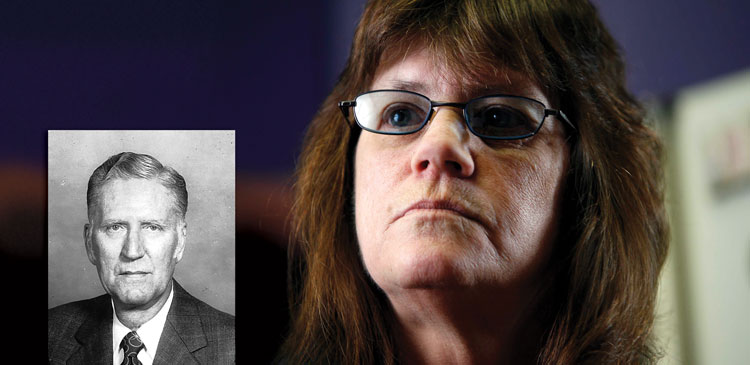March 28, 1978: Supreme Court weighs in on judicial immunity, reluctantly

Judge Harold Stump and Jamie Renee Coleman, formerly Linda Sparkman, at her Waterloo, Indiana, home in 2007. Images courtesy of William H. Willennar Genealogy Center, a service of Eckhart Public Library; Indy Star\USA Tooday Network
It was the summer of 1971 in Rust Belt Indiana, and in a small house in working-class Auburn, the tensions between Ora Spitler McFarlin and her youngest daughter were as familiar as the sound of the Bee Gees.
Linda Kay Spitler, 15, was hanging out with an older crowd. Some of them were boys. She stayed out late; occasionally all night. Ora was strict and fought constantly with her daughter. She knew what could happen. Linda’s sister had her first child as a high school senior, and Ora was determined that it would not happen to Linda.
Ora met with a lawyer who helped her draw up an unusual document. It purported to be a court petition, but it read like a hold harmless agreement—authorizing doctors at the local hospital to perform a tubal ligation. Though Linda’s school progress was in keeping with her age, the document alleged she was “somewhat retarded.” It proposed the surgery was in Linda’s “best interest” because it was “impossible for [Ora] to maintain and control a continuous observation of the activities of said daughter each and every day.”
On July 9, 1971, the document was submitted to DeKalb County Circuit Judge Harold D. Stump, who signed it the same day. There was no hearing or other docketed event, only an ex parte meeting with the judge, Ora and her lawyer. There was no guardian ad litem appointed, no voice or notice given to the young teen and no statutory authority cited by the judge to explain his signature.
Six days later, Linda was admitted to DeKalb Memorial Hospital for what she thought was merely an appendectomy. Only several years later, after her marriage to Leo Sparkman failed to produce children, did she discover that she had been sterilized.
Leo and Linda Sparkman filed a lawsuit in federal court accusing her mother; her mother’s lawyer, Warren Sunday; the doctors; and DeKalb Memorial of conspiring with Stump to violate their constitutional rights.
The case was met with quick dismissal on the grounds of judicial immunity, a centuries-old principle of due process designed and refined to protect judges from personal liability for unpopular decisions. Trial Judge Jesse Eschbach declared that Stump had signed the document in his official judicial capacity and was therefore absolutely immune from personal legal action. With Stump removed, he reasoned, no federal claim could be supported, thereby relieving all other parties from the lawsuit.
At the Chicago-based 7th U.S. Circuit Court of Appeals, the reaction was different. Indiana at the time allowed court-ordered sterilizations, but only under certain, limited circumstances—none of which had applied to Linda. Allowing judges to act outside their authority without consequence, the court wrote unanimously, “would be sanctioning tyranny from the bench.”
Stump appealed to the U.S. Supreme Court, where the case was approached warily.
“This is a sordid case,” a law clerk wrote recommending against certiorari. “If this court grants review, the case will attract even wider attention and publicity than it has already received—all for the wrong reasons.”
At oral arguments, the justices appeared torn between the practical case for judicial immunity and the abhorrent circumstances of Stump’s action.
Justice Potter Stewart wondered if immunity might apply to a judge who authorized chopping off a child’s right hand to curb a mother’s concern about kleptomania. Justice Thurgood Marshall, though horrified by Stump’s disregard of due process, lamented potential curbs on judicial immunity: “There are many experienced judges who have made mistakes.”
On March 28, 1978, the court ruled 5-3 in favor of Stump. “A judge is absolutely immune from liability for his judicial acts even if his exercise of authority is flawed by the commission of grave procedural errors,” Justice Byron White wrote for the majority.
In dissent, however, Stewart saw nothing judicial in Stump’s actions: “A judge is not free, like a loose cannon, to inflict indiscriminate damage whenever he announces that he is acting in his judicial capacity.”



